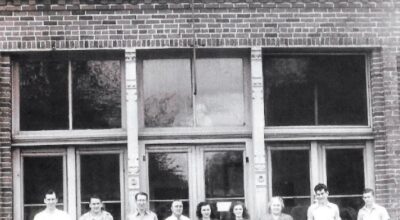NEMPA keeps up with demand
Published 6:00 am Sunday, April 10, 2016
Lafayette County’s growth is not coming without its challenges and growing pains, but one entity is keeping ahead of the curve and is ready for new residential and commercial customers.
North East Mississippi Electric Power Association has averaged a 3 percent customer base growth the past handful of years and is constantly planning, looking forward and ensuring the utility can provide electricity to everyone.
“Our load growth, the number of customers, on average for the last four years now is just under 3.5 percent,” said North East’s general manager and CEO, Keith Hayward. “We’re projecting that to have another big increase this year because we’ve got several new developments that are under construction right now. We’re seeing a lot on the commercial side also with the big box stores going in.”
Hayward said the utility has three-year, five-year and 10-year projections for where growth will surface and has created financial plans to prepare.
“We see areas that are growing and we upgrade power lines and build new substations and things like that all the time,” Hayward said. “We have to be there before the customers are there. You can’t get stuck in traffic on a power line. Power lines melt down. With being a rural electric development, part of our plan was from the beginning to plan and build for the future for customers. We build as they come and don’t try to overcollect in the rates.”
Currently there are 24,500 meters on North East’s system and most of its growth is in Lafayette and Union counties. But the utility also serves parts of Pontotoc, Marshall and Benton counties and has nearly 6,000 customers in the city limits of Oxford.
Installing lines
North East currently has a little over 2,000 miles of lines serving the region, and a lot of that is now underground.
Hayward said in May 2015 North East changed its rules for new subdivisions regarding utility services.
“We changed our line extension policy and in subdivisions only we support underground utilities in the developments whenever possible,” Hayward said. “When you get into houses that are close to one another and a lot infrastructure, maintenance costs start leveling out the extra cost of putting underground in. Many of our developers like it and we are now used to it.”
Grand Oaks was the first major subdivision they installed underground in in the mid-1990s.
In addition to underground lines, Hayward said another change in policy to keep up with growth was more fairly distributing costs and line extension policies.
“Our existing members were starting to experience a little bit of rate pressure by subsidizing so much of the growth,” he said. “The growth was paying for itself, but it was coming in such large amounts that we were having to use so much money to keep up with growth, so we adjusted our line extension policy to more fairly distribute that cost to developers. We still maintain some of the lowest line extension costs around.”
Alternative methods
Another way the utility is looking to the future could save both residents’ pocketbooks and the environment: solar power.
“We’ve got two big solar panels going out west of town in Union County,” Hayward said. “Their in-service date has been moved to November so probably this summer they will start instruction. We’re really pushing that we have solar panels going. It’s our biggest thing going right now.”
The panels are a $4 million project, and a privately owned company has entered into the agreement with Tennessee Valley Authority and Northeast to install two 1-megawatt solar systems on North East’s power’s distribution grid. North East Manager of Engineering and Operations Randall Abel said the company will sell power back to TVA while attached to North East’s grid.
“Solar power, hydro power, wind power are all part of TVA’s green energy portfolio that helps TVA keep prices down for customers throughout the valley, so this is part of TVA’s overall green power initiative that they have,” Abel said. “There are many other solar systems throughout the valley.”
Abel said both TVA and North East encourage residents to consider solar power efforts. He said four North East customers currently have panels, and while the humidity is too high in the South to fully supply a house all day with electricity, there is still a benefit.
“We get calls relatively often from people wanting to install solar on their house,” he said. “It’s just an economic decision they have to make. We want anybody who goes into it to be armed with as much information as they can get so they can make a good financial decision as to whether it’s a good idea or not a good idea.”
Hayward said most people interested in solar power aren’t necessarily looking for an economic return, but they feel the need to go green. He also said large-scale, community solar power investments are the way to go because they are about a third of the cost of residential investments and provide a dramatic difference in return. He said they have about 2,000 kilowatts on a community panel versus about 10 kilowatts on a home.
Hayward said with the solar company selling power to TVA, using North East lines, TVA will be able to help keep rates down. And since North East is member owned, Hayward said there is a benefit for everyone.
“We’re all in this together,” he said.





